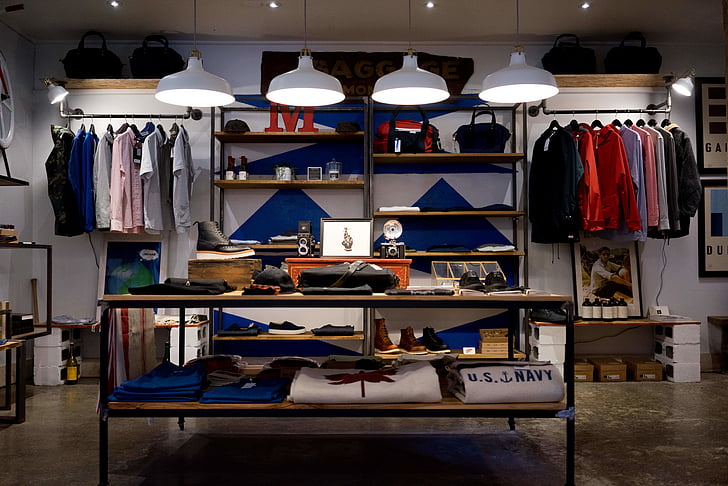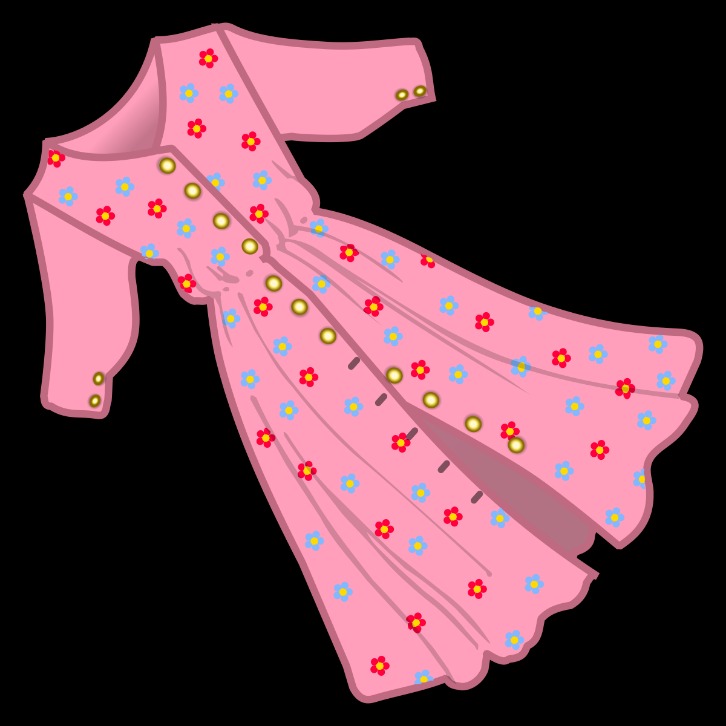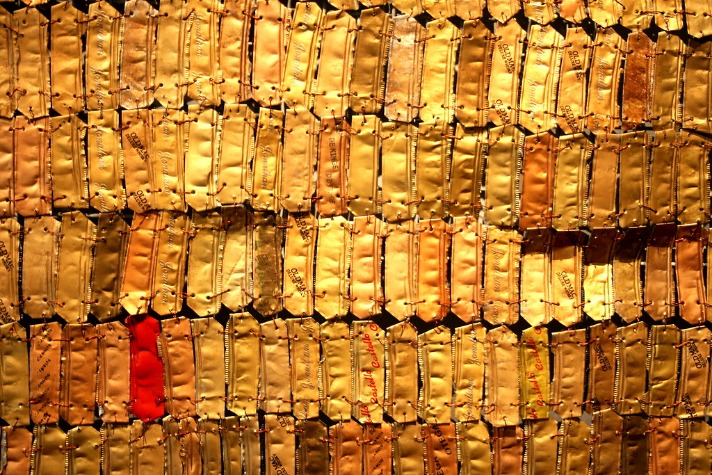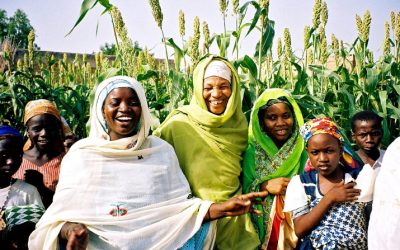Traditional Nigerian Attire
Traditional Nigerian attire is a vibrant and significant expression of the country’s rich cultural heritage. It showcases the diverse styles, fabrics, and designs unique to Nigeria’s various ethnic groups. These garments are often worn during special occasions, ceremonies, and festivals, reflecting pride, identity, and history. From elaborate embroidered robes to colorful headwraps, Nigerian clothes embody the nation’s artistic creativity and cultural diversity.
Agbada
Traditional Nigerian attire plays a significant role in the country’s rich cultural heritage, with Agbada standing out as one of the most iconic garments. Agbada is a large, flowing robe often made from luxurious fabrics like embroidered cotton or silk, symbolizing nobility and elegance. It is typically worn by men during special occasions such as weddings, festivals, and traditional ceremonies. The attire is complemented with a cap called a fila or a Yoruba hat, and sometimes features intricate embroidery that showcases craftsmanship and cultural identity. Overall, Agbada represents a blend of artistry, tradition, and cultural pride, making it a cherished attire across Nigeria.
Buba and Iro
Traditional Nigerian attire is rich in cultural significance and diverse in style, reflecting the country’s numerous ethnic groups. Among the most iconic garments are the Buba and Iro, commonly worn by women in various regions of Nigeria, especially among the Yoruba people. These clothing items symbolize elegance, heritage, and identity, often worn during festivals, ceremonies, and special occasions.
- The Buba is a loose-fitting blouse that is typically made from brightly colored and embellished fabrics. It is designed to be comfortable while also showcasing intricate embroidery, beadwork, or prints that highlight cultural artistry.
- The Iro, also known as wrapper or wrap-around skirt, is wrapped around the waist over the Buba. It can be decorated with patterns, beads, or embroidery, and is usually tied securely to ensure a graceful and stylish appearance.
- Together, the Buba and Iro create a vibrant and elegant ensemble that is complemented by accessories such as gele (headwrap), beads, and jewelry, emphasizing the wearer’s cultural roots and personal style.
George Fabric and Styles
Traditional Nigerian attire is a vibrant expression of the country’s rich cultural diversity, often featuring colorful fabrics and intricate designs. Among the most iconic fabrics used in Nigerian clothing is George fabric, known for its bright colors, bold patterns, and lightweight texture. This versatile fabric is favored in various traditional outfits worn during festivals, ceremonies, and everyday occasions.
George fabric is usually made from cotton and is characterized by its shiny surface and vivid print. It is often used to craft stylish and elegant clothing for both men and women. Nigerian styles incorporate the fabric into numerous traditional outfits such as Agbada, Buba, Wrapper, and Wrapper paired with a blouse, among others. These styles highlight cultural heritage while offering a modern touch.
- Agbada: An elaborate flowing gown often embroidered and worn for formal occasions.
- Kaftan: A loose, comfortable tunic made from George fabric, popular across Nigeria.
- Buba and Wrapper: A traditional blouse paired with a wrapper, commonly worn by women.
- Senator Suit: A modern style for men that features George fabric in a tailored suit design.
- Headwraps and Caps: Accessories such as Gele and Kekke made from matching or contrasting George fabric to complete the look.
Overall, Nigerian attire crafted from George fabric exemplifies the country’s vibrant culture and timeless fashion sense, combining tradition with contemporary trends.
Senator Suit
Traditional Nigerian attire and the senator suit are important aspects of Nigeria’s rich cultural heritage. These garments reflect the diverse ethnic groups and their unique fashion influences across the country. They are worn during celebrations, official events, and everyday life, showcasing Nigeria’s vibrant culture and history.
- Traditional Nigerian attire varies among different ethnic groups, including the Yoruba, Igbo, Hausa, and others, each with distinct fabrics, designs, and accessories.
- The Aso Ebi is a popular traditional outfit often worn during weddings and social gatherings to symbolize unity and cultural identity.
- Materials like Ankara, Aso-oke, and George fabric are commonly used to craft these traditional garments.
- The senator suit, on the other hand, is a modern formal outfit predominantly worn by Nigerian politicians and professionals during official functions.
- It typically consists of a well-tailored blazer and trousers made from high-quality fabric, often featuring intricate embroidery or embellishments.
- The senator suit is regarded as a symbol of elegance, professionalism, and national pride in Nigeria.
Contemporary Nigerian Fashion
Contemporary Nigerian fashion is a vibrant and dynamic expression of cultural heritage and modernity. It seamlessly blends traditional styles with innovative designs, creating a unique and influential aesthetic. Nigerian designers are gaining international recognition for their creativity, craftsmanship, and ability to celebrate the diversity of Nigeria’s rich cultural landscape through clothing.
Urban Streetwear
Contemporary Nigerian fashion, especially urban streetwear, is a vibrant reflection of the country’s rich cultural diversity and modern influences. Nigerian designers blend traditional textures, patterns, and motifs with contemporary styles to create unique and bold looks that resonate with young urbanites and fashion enthusiasts worldwide.
- Bold Prints and Patterns: Nigerian streetwear often features vibrant fabrics like Ankara, Aso Ebi, and Adire, which are incorporated into hoodies, joggers, and jackets, showcasing cultural heritage with a modern twist.
- Mix of Traditional and Modern Elements: Designers combine native textiles and motifs with streetwear staples such as sneakers, oversized t-shirts, and caps, resulting in a dynamic fusion of old and new.
- Influence of Global Trends: Nigerian urban fashion embraces global streetwear trends, including logo-centric designs, baggy pants, and statement accessories, while maintaining a distinct Nigerian identity.
- Expressive Accessories: Bold jewelry, headwraps, and customized sneakers are integral, allowing individuals to express their personality and cultural pride within streetwear ensembles.
- Emerging Designers and Brands: Lagos and Abuja are hubs for innovative Nigerian streetwear brands like Orange Culture, Mowalola, and Wavy the Creator, who push boundaries and elevate Nigerian fashion on the world stage.
Fashion Designers and Influences
Contemporary Nigerian fashion is a vibrant and dynamic expression of the country’s rich cultural heritage and modern influences. It seamlessly blends traditional textiles, patterns, and techniques with contemporary designs, creating a unique aesthetic that appeals globally. Nigerian fashion designers are increasingly gaining international recognition for their innovative approaches and ability to celebrate indigenous artistry. Influences from African history, music, art, and social issues profoundly shape the designs, making Nigerian fashion a powerful platform for storytelling and cultural pride.
Mixing Traditional and Modern Styles
Contemporary Nigerian fashion beautifully blends traditional elements with modern styles, creating a vibrant and unique aesthetic that reflects the country’s rich cultural heritage and current global trends. Nigerian designers often incorporate traditional fabrics like Ankara, Aso Ebi, and Buba into modern silhouettes such as tailored suits, streetwear, and evening gowns, showcasing the versatility of these materials. This fusion allows for bold, colorful, and innovative outfits that honor Nigerian roots while appealing to the global fashion scene. The use of traditional patterns and craftsmanship alongside contemporary design techniques highlights Nigeria’s cultural pride and its position as a dynamic player in the fashion industry. Overall, Nigerian fashion exemplifies a seamless integration of the old and the new, celebrating identity and creativity through clothing.
Materials and Fabrics
Materials and fabrics play a crucial role in defining the rich cultural heritage of Nigerian clothing. From vibrant textiles to traditional weaves, these fabrics embody the diversity and creativity of Nigerian communities. Whether used in elaborate ceremonial attire or everyday wear, materials like Ankara, Aso Oke, and Adire reflect the nation’s history, artistry, and identity.
Adire Cloth
Adire cloth is a traditional Nigerian fabric renowned for its vibrant patterns and rich cultural significance. Made through a resist-dyeing process, it involves applying resist materials like cassava paste or starch to create intricate designs before dyeing. This method results in unique, handcrafted patterns that reflect the heritage and artistry of various Nigerian communities. Adire fabrics are typically made from cotton, making them breathable and suitable for different climates. They are often used in making traditional attire such as boubou, iro, and gele, and have also gained popularity in contemporary fashion. Other materials and fabrics commonly found in Nigerian clothing include Ankara, gele, and lace, each contributing to the diverse and colorful wardrobe of Nigeria. Overall, Adire cloth stands out as a symbol of Nigeria’s rich textile history and cultural expression in fashion.
Ankara Fabric
Materials and fabrics play a crucial role in the rich cultural heritage of Nigerian clothing, with Ankara fabric being one of the most popular choices. Ankara, also known as African wax print fabric, is renowned for its vibrant colors and bold patterns that symbolize African identity and artistry. Made from 100% cotton, Ankara is durable, breathable, and versatile, making it suitable for a wide range of clothing styles from traditional attires to modern fashion statements.
Aso Oke
Aso Oke is a traditional Nigerian fabric renowned for its vibrant colors and intricate patterns. Made primarily by the Yoruba people, this luxurious textile is expertly woven from silk, cotton, or a combination of both, showcasing the rich cultural heritage of Nigeria. The fabric’s distinctive geometric designs often symbolize social status, history, and cultural identity, making it a popular choice for special occasions and ceremonies.
Lace and Embroidery
Materials and fabrics play a vital role in the rich textile tradition of Nigeria, reflecting cultural heritage and artistry. Traditional fabrics such as Aso Oke, Adire, and Ankara are widely celebrated for their vibrant colors and intricate patterns. Luxurious materials like silk, velvet, and brocade are often used for special occasions, showcasing craftsmanship and status. Lace and embroidery are also prominent features, adding elegance and detail to Nigerian clothing. Lace fabrics, often imported, are delicately adorned with embroidery, sequins, and beads, making them a popular choice for weddings and formal events. Embroidery techniques vary by region, with some areas known for their elaborate threadwork and bead embellishments that enhance the beauty and uniqueness of garments. Overall, the combination of diverse materials, fabrics, lace, and embroidery embodies Nigeria’s cultural richness and artisanship, making their clothing a symbol of identity and tradition.

Accessories and Adornments
Accessories and adornments play a vital role in showcasing Nigeria’s rich cultural heritage and personal style. They complement traditional and modern outfits, reflecting regional identities and social statuses. From intricate beadwork to vibrant headgears, these adornments add color, symbolism, and elegance to Nigerian clothing, making them essential elements of the country’s diverse fashion landscape.
Headgear: Fila, Gombé, and Gele
Accessories and adornments play a vital role in Nigerian traditional attire, enhancing cultural expression and identity. Headgear such as Fila, Gombé, and Gele are significant in showcasing social status, regional identity, and personal style.
- Fila: A soft, rounded cap worn predominantly by men in Yoruba culture. It is often made from cotton or velvet and can be styled in various ways to suit different occasions.
- Gombé: A tall, conical hat traditionally worn by the Hausa and Fulani people. It signifies formality and respect and is commonly seen during important ceremonies and events.
- Gele: A large, elaborate headwrap worn by women across Nigeria, especially during celebrations and weddings. The Gele is styled intricately to complement outfits and express personal flair.
Beads and Jewelry
In Nigerian clothing, accessories and adornments play a vital role in reflecting cultural identity and personal style. Beads and jewelry are especially significant, often symbolizing social status, heritage, and beauty. Traditional beads, such as coral, glass, and wooden beads, are commonly used in necklaces, bracelets, and headpieces, enriching outfits for ceremonies and celebrations. These accessories are meticulously crafted and carry cultural meanings, often representing regional or ethnic affiliations. Contemporary Nigerian fashion seamlessly blends traditional jewelry styles with modern trends, creating vibrant looks that honor heritage while embracing global fashion. Overall, accessories and adornments are essential elements that complete Nigerian attire, accentuating grace, tradition, and individuality.
Footwear Styles
Accessories and adornments, along with footwear styles, play a significant role in traditional and contemporary Nigerian clothing. Nigerian accessories often include beads, jewelry, headpieces, and umbrellas that showcase cultural identity and artistic expression. Beaded necklaces and earrings are common among various ethnic groups, symbolizing status and heritage. Adornments such as cowries, shells, and metallic embellishments further enhance the cultural significance of the attire. Footwear styles in Nigeria range from traditional options like leather sandals and beaded slippers to modern shoes, reflecting a blend of indigenous designs and contemporary fashion trends. These elements collectively contribute to the rich diversity and vibrant aesthetic of Nigerian dress culture.
Regional Variations in Nigerian Clothes

Nigerian clothing is renowned for its rich diversity and vibrant cultural expressions, which vary significantly across different regions of the country. Each ethnic group and region showcases unique styles, fabrics, and traditional attire that reflect their history, beliefs, and environment. Exploring these regional variations offers a fascinating glimpse into Nigeria’s cultural mosaic and the importance of clothing as a symbol of identity and heritage.
Yoruba Attire
Regional variations in Nigerian clothes highlight the rich cultural diversity across the country, with each ethnic group showcasing unique styles and traditional attire. Yoruba attire, prominent in Southwest Nigeria, is known for its vibrant colors, intricate embroidery, and elegant design. Men typically wear
Hausa Dress Styles
Regional variations in Nigerian clothes reflect the rich cultural diversity across the country, with each ethnic group showcasing unique styles and traditional attire. Among these, Hausa dress styles are particularly prominent in Northern Nigeria, characterized by their distinctive use of flowing fabrics, intricate embroidery, and traditional accessories. The Hausa often wear flowing robes called “Babban Riga” for men, complemented by matching caps known as “Hausa caps” or “Fula caps.” Women typically wear long, embroidered gowns called “Zani” or “Abaya,” paired with headscarves or turbans. These traditional outfits are often made from colorful, richly textured fabrics such as brocade, lace, and wax prints, symbolizing cultural identity and social status. Regional variations within Hausa dressing also include differences in the style and decoration of caps, the choice of fabrics, and the way garments are layered or accessorized, highlighting the diversity and vibrancy of Hausa cultural attire in Nigeria.
Ibo Traditional Clothing
Regional variations in Nigerian clothes reflect the rich cultural diversity of the country, with each ethnic group showcasing unique traditional attire. Among these, Igbo traditional clothing stands out with its vibrant colors and intricate designs, embodying the cultural identity of the Igbo people. Igbo men often wear isiagu, a patterned shirt, paired with trousers and a red cap known as Okpu Agu, while women typically wear wrapper skirts, blouses, and headscarves made from brightly colored fabrics. These garments are often decorated with embroidery and beads, highlighting their significance in ceremonies and festivals. The clothing not only serves as a symbol of cultural heritage but also varies within regions, incorporating local materials and styles that distinguish one community from another, making Nigerian traditional attire a colorful tapestry of heritage and tradition.
Modern Trends and Fashion Events
Modern trends and fashion events in Nigeria showcase a vibrant blend of traditional heritage and contemporary styles. As the fashion industry in Nigeria continues to grow, designers and fashion enthusiasts are embracing innovative designs, sustainable practices, and cultural expression. This dynamic landscape reflects the diverse and evolving tastes of Nigeria’s people, making it a prominent hub for both local and international fashion scenes.
Nigerian Fashion Weeks
Nigerian fashion has gained global recognition for its vibrant and innovative designs, blending traditional elements with modern trends. Nigerian fashion weeks showcase the latest collections from top designers, highlighting the country’s rich cultural heritage and contemporary creativity. These events serve as a platform for emerging talents and established designers to display their work, attracting international buyers and fashion enthusiasts. Modern trends in Nigerian clothes often incorporate bold colors, intricate patterns, and unique fabrics, reflecting the diverse cultural influences across the country. As Nigerian fashion continues to evolve, it remains a significant force in shaping global fashion trends and celebrating Nigeria’s stylish identity.
Celebrity Influences
Modern trends in Nigerian fashion are increasingly shaped by global influences while maintaining unique cultural elements. Fashion events in Nigeria, such as Lagos Fashion Week, serve as platforms to showcase innovative designs that blend traditional fabrics with contemporary styles. Celebrity influences play a significant role in setting fashion standards, with Nigerian musicians, actors, and social media personalities frequently dictating popular trends. These icons often promote local designers and brands, contributing to the global recognition of Nigerian clothing and style. As a result, Nigerian clothing continues to evolve, embracing both heritage and modernity in its vibrant expressions of identity.
Innovations in Nigerian Fashion
Modern trends and fashion events in Nigeria showcase a dynamic blend of traditional influences and contemporary innovation, reflecting the country’s rich cultural diversity. Nigerian designers are increasingly gaining global recognition through fashion weeks, exhibitions, and social media platforms, highlighting their unique craftsmanship and modern interpretations of indigenous styles. Innovations such as sustainable fabrics, eco-friendly dyeing techniques, and innovative use of Ankara and Aso Ebi fabrics are shaping the future of Nigerian fashion. Additionally, the rise of gender-fluid and inclusive clothing lines demonstrates a progressive shift towards embracing individuality and diversity. Overall, Nigeria’s fashion scene continues to evolve rapidly, blending heritage with modernity to set new trends on both local and international stages.





0 Comments